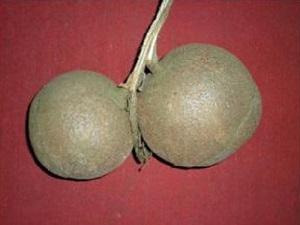Khun Moe Aung
This project aims to promote the planting and conservation of Sal trees, to encourage the local people to take an interest in the Sal trees conservation programs.

Fruit of Sal tree.
Sal tree is a famous timber tree and scientifically known as Shorea robusta. It is native to Myanmar. Due to its cultural importance, medicinal uses and other uses by the tribal people, the demand is much more than available supply. To date, the species are threatened as endemic species due to the misconduct of anthropogenic activities in the project area. Furthermore, indigenous people do not know the endemic status of this species in their region and they have been using it for their private purposes. But, there is no careful attention on this species around their region, lack of new planting activities and most of them depend on the wild Sal trees were observed.

Young leaves of Sal tree.
In fact, the Sal trees are highly useful for the local biodiversity stable and enrichment due to its can provide the nesting sites for some fauna and flora. It is also participated in the carbon dioxide restoration cycle as well as improvement of soil and air conditions. Moreover, Sal trees are worshiped among the Buddhist in Myanmar. Therefore, this project is not important for nature conservation but also essential for culture and religious development in Myanmar. Therefore, to encourage the present of Sal tree on our planet, we have to carry out this project with the participation of local communities.
The following are project's major activities.
A. First Four Months of the Project
- Data processing, field investigation, and prepare the public extension processes.
-Propagate and protect the new young plants with local communities' participation.
B. Second Four Months of the Project
- Instillation the importance of Sal trees conservation programs to local communities including nearby villages.
- Establish the Sal Trees Conservation Committee and Local Nature Conservation Group.
- Field investigation and maintain the plants with local communities.
- Public extension to villagers heads, religious and traditions leaders, villagers with distribution the handouts.
- Meeting, community level demonstrations, school level awareness programs will be conducted.
C. Last Four Months of the Project
- Continuation the second part of the project.
- Plantation and fencing the young trees which are received from the nursery.